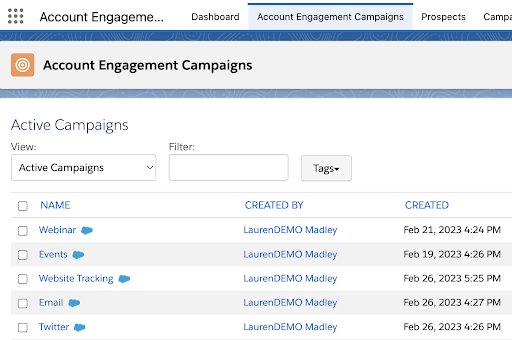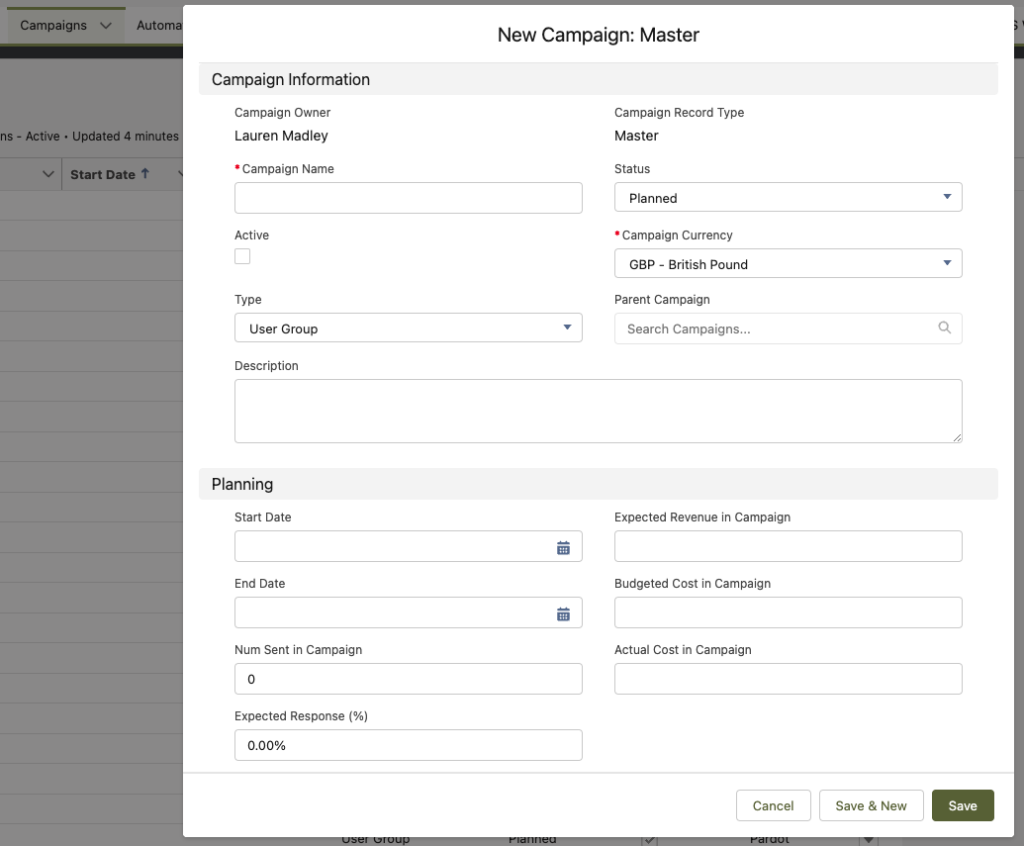After many years of confusion around Account Engagement and Salesforce campaigns working independently, Salesforce has combined the two via Connected Campaigns. Not everyone has them set up, nor do they realise the benefits of the alignment. Let’s look at how it all works now they’re connected.
You may remember our previous blog on The Differences Between Account Engagement (Pardot) and Salesforce Campaigns. This goes through how things were working before the introduction of Connected Campaigns.
Here’s a brief overview of the main differences:
Account Engagement Campaign |
Salesforce Campaign |
| Individual has only one source campaign | Individual can belong to multiple campaigns |
| ROI is based on first-touch attribution | ROI is based on multi-touch attribution |
| Reportable as a custom field in Salesforce | Accessed via dynamic list criteria in Account Engagement |
| Prospect Source Campaign assigned automatically based on first interaction | Individuals added via Completion Actions or directly in Salesforce |
The alignment between Account Engagement and Salesforce Campaigns opens up multi-touch attribution, automatic campaign member sync and engagement data. These elements allow for richer campaign reporting. Our blog – Is it time to sync your Pardot and Salesforce Campaigns – can help you understand the changes, what to look out for, and things to take into consideration. But, realistically who doesn’t want richer campaign reporting?
How do I know if I have Connected Campaigns set up? Does it look different?
Setting up Connected Campaigns is not as easy as just clicking a button and switching on the feature. If you have existing campaigns these will need mapping. This provides a great opportunity to clear out any unused ones.
Implementing this feature is something that users with the ‘Administrator’ role can do with the ‘To connect Account Engagement campaigns to Salesforce campaigns’ user permission. Before making any adjustments, here are a few things you’ll need to do:
- Identify the Account Engagement campaigns that you want to keep and make sure they have an existing Salesforce campaign.
- Ensure the Salesforce campaigns that you want to keep have an equivalent Account Engagement campaign.
- Define which Account Engagement campaigns, if any, must stay in Account Engagement only.
- Create record types or assignments to organise your campaigns.
Once you’ve gone through and checked which campaigns you want to connect to, there are a couple of different ways you can do this:
- Individual Account Engagement and Salesforce Campaigns
- Multiple Account Engagement and Salesforce Campaigns at Once
- Existing Account Engagement Campaigns to New Salesforce Campaigns with Workbench
Where did my ‘Create new campaign’ button go in Account Engagement?
Now, all Connected Campaigns are managed in Salesforce. You can also have the legacy, Account Engagement-only campaigns, however, these are located on a different tab. The Account Engagement Campaigns tab will show all available campaigns, including the connected and Account Engagement-only versions as well. If the campaign is connected to a Salesforce campaign, then you will see a blue cloud symbol next to the campaign name.

Just a reminder…
Going forward, your users need to create new campaigns in Salesforce. To do this, go to the Campaigns tab, select the New button and a new window will pop up.

This is where you’ll fill out all of your campaign information. Once saved, it can take a few minutes (between 5-30 minutes usually) to appear in your campaign list.

And there you have it, your new connected campaign is all set.
Whether you’re a Salesforce Administrator or an Account Engagement user, enabling Connected Campaigns will change how you use campaigns. For those setting it up, use the official Salesforce Connected Campaigns Implementation Guide. But, before making any start, read through the considerations for enabling Connected Campaigns. It’s a really handy guide to ensure nothing gets lost during the switchover. What are you waiting for?

